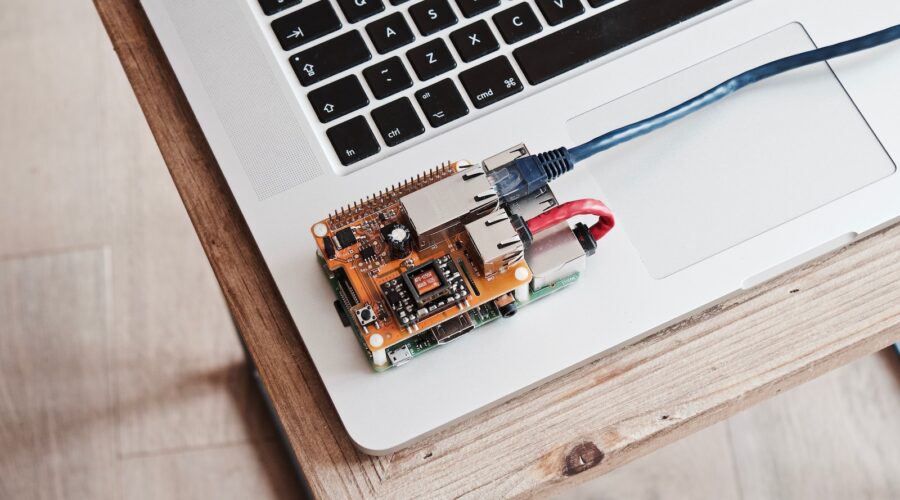Contents
Introduction
The Internet of Things (IoT) is a network of physical objects that are embedded with sensors, software and other technologies to collect and exchange data. This data is used to create automated systems that can sense, analyze and respond to their environment. IoT has become an important part of our lives, connecting everyday objects to the digital world and providing us with greater convenience, efficiency and security.
What is the Internet of Things (IoT) and How Does it Work?
The Internet of Things (IoT) is a network of physical objects that are embedded with sensors, software, and other technologies to enable them to collect and exchange data. This data is then used to make decisions, provide insights, and automate various processes. IoT works by connecting objects to the Internet via sensors or actuators that can collect, transfer, and process data. This data can be used to control or monitor the physical world, such as turning lights on or off, unlocking doors, or controlling the temperature of a room. IoT can also be used to help businesses make decisions based on real-time data and insights. For example, a company may use IoT to monitor and analyze the performance of its machines in order to optimize operations and increase efficiency. IoT offers numerous advantages, including increased efficiency, improved safety and security, and better customer experiences.
What Benefits Does the Internet of Things (IoT) Provide?
The Internet of Things (IoT) is a powerful technology that enables physical devices to connect to the internet and exchange data. IoT offers many advantages, including increased efficiency, cost savings, improved safety, and enhanced customer experiences.
First, IoT increases efficiency by allowing machines or devices to communicate with each other without requiring manual input. This automation of processes can save time and money, as well as reduce errors caused by human error. Additionally, IoT can be used to monitor and analyze data, allowing organizations to make informed decisions more quickly.
Second, IoT can lead to cost savings by streamlining processes and eliminating the need for manual labor. For example, IoT-enabled sensors can detect when a machine needs maintenance, thereby reducing downtime and the need for manual labor. Furthermore, IoT can help organizations reduce their energy consumption, leading to further cost savings.
Third, IoT can improve safety by providing real-time monitoring of machines and systems. This can help reduce the risk of accidents and injuries as well as provide early warnings of potential safety hazards. Additionally, IoT can be used to monitor the environment and alert authorities of any changes that may negatively impact public health and safety.
Finally, IoT can enhance customer experiences by providing personalized services and products. For example, IoT-enabled devices can collect and analyze data on customer preferences and behavior, allowing companies to provide more tailored services and products. Additionally, IoT can be used to provide customers with real-time updates and notifications, allowing them to stay informed and up-to-date.
Overall, IoT offers numerous benefits, from increased efficiency and cost savings to improved safety and enhanced customer experiences. This technology can help organizations reduce operational costs, improve safety, and provide customers with personalized services and products.
Exploring Security Risks of the Internet of Things (IoT)
The Internet of Things (IoT) is a rapidly growing technology that connects everyday objects to the internet, allowing for increased efficiency, automation, and convenience for users. However, along with these benefits come serious security risks that must be addressed in order to ensure the safe and secure use of IoT devices.
One major risk associated with IoT devices is the potential for malicious actors to gain access to sensitive user data. IoT devices collect and share data with servers, which are vulnerable to attack if they are not properly secured. Hackers can use this data to gain access to user accounts, steal sensitive information, or control the device itself.
Another risk associated with IoT devices is their vulnerability to botnets. Botnets are networks of malicious devices that can be used to launch distributed denial of service (DDoS) attacks, which can overwhelm servers and cause them to crash. Botnets can also be used to launch phishing attacks and to spread malware. Additionally, many IoT devices are shipped with pre-programmed passwords, making them vulnerable to attack if the user does not change them.
In order to address these risks, it is important for users to take measures to ensure the security of their IoT devices. Users should ensure that their devices are regularly updated with the latest security patches and that their passwords are changed from the default settings. Additionally, users should be aware of the risks associated with connecting their devices to unsecured networks or to public Wi-Fi. Finally, users should utilize two-factor authentication whenever available to ensure that their accounts are as secure as possible.
The Internet of Things has great potential to revolutionize the way we interact with everyday objects, but it is important to understand the security risks associated with this technology in order to ensure that it is used safely and securely. By taking the proper precautions and understanding the potential threats, users can better protect themselves and their data from the dangers of the IoT.
Conclusion
The Internet of Things (IoT) is a revolutionary technology that is connecting and automating everyday physical objects, allowing them to interact with each other and the environment in which they are placed. By leveraging the power of the internet, IoT enables objects to collect and exchange data, creating opportunities for improved efficiency, accuracy, and cost savings. With the potential to revolutionize the way we live and work, the internet of things is an exciting new development that has the potential to bring about great positive change.

